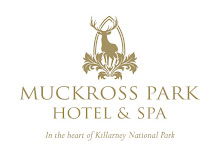
Long before Strongbow entered Ireland with his Welsh knights; at the invite of traitorous Irish king Dermot MacMurchada; the Irish were plundering the English and Welsh coastline.
Wild and bearded Irish warriors stalked the Irish Sea, landing lightning attacks on unsuspecting settlements and Roman villas. They would loot and plunder what they could, carrying women and children back to Ireland into marriage and slavery. There's stories of highly planned kidnap and ransom missions, with Roman family members being safely reunited with their families once huge ransoms were paid.
Like the Vikings with us many years later, for a time the Irish struck fear deep into the hearts of the English and Welsh, and also the Romans, who at the time were encamped in Britain.
It was a plundering raiding party, looking for slaves and wives, who carried a Roman boy back to Ireland into a cold life of slavery. This fourteen year old Roman boy, Patrickus, grew into Saint Patrick.
.jpg)
This Welsh/Roman man has been adopted by the Irish as one of our patron saints, responsible for converting single handed a land of ruthless pagans into devout Christians, driving snakes from our green and rocky shores and trademarking the shamrock.
The story of Saint Patrick is incredible and tough. He's even believed to have killed someone, possibly a lover, during his lifetime.
In truth Christian missionaries were traveling Ireland's hills, forests and bogs before a newly ordained Patrickus returned to Ireland, having escaped from slavery in a row-boat several years earlier.
.jpg)
Although he wasn't the first missionary to arrive in Ireland; when Patrickus returned as a priest, he had several things in his favour. After six years living here he knew the land, the people, the customs and the language. He was able to move relatively unhindered around the country and possibly because of his Roman noble descent he was treated with some respect. He was also here just at the right time, as the country was ready for the bells of Christianity to toll.
The Irish pagans and druids worshipped several gods, including snakes. Certain groups of druids carried a snake tattoo emblazoned on their upper arm. The druids Patrickus wasn't able to convert (and there were many of them) he drove from Ireland; hence the connection with Patrickus driving all snakes from the country.
.JPG)
One of our furthermost outreaches is a brutally sharp, protrusion of rock off the Kerry coast, which we now call Skellig Michael. Here stood the final outpost of druids and pagan worshippers; wild, rugged men, who called on many gods, threw curses across the country from atop of their rock and performed human sacrifices - or so Christianity viewed them.
.JPG)
To this rock Patrickus travelled, alone and wary, in a little currach, to face his final battle. Here he faced his enemies and found his match. Men capable of performing human sacrifices and surviving a tough, tough life on these rocks stood against the stout heart and strong staff of Patrickus...
For a day or more Patrickus argued and fought with the druids, until at last, weary, bloodied, dehydrated and faltering he drew together his final strength and called upon the archangel Michael to help. What happened next, whether the archangel Michael descended to assist, or whether Patrickus used his final strength, is not known, but he did succeed in driving the last of the Irish pagans off the black rock and out of Ireland and today this rock is known as Skellig Michael - The Rock of Michael.

A monastery was built on Skellig Michael, and hardy monks made a life of worship and survival for themselves from the 6th to the 12th century.
Wherever druids had settled and worshipped, the first Irish priests and monks would often build churches and monasteries in an effort to keep the displaced druids from returning and keep at bay the evil gods and spirits, whom to some extent were still half-believed and feared. This is exactly what happened on Skellig Michael, after being such a powerful pagan site for so long, there was no way Patrickus could leave it to it's own menacing devices.
Interestingly, one of the reasons that Skellig Michael was abandoned in the 12th century was because the Roman Catholic Church feared the monks and holy men living in remote locations were becoming too connected with nature, too in awe of the elements around them, and slipping into some of the pagan ways of life; so larger, more central monasteries were built with a more formal way of holy life and worship.
The tiny village of Ballinskelligs, near Caherciveen, is where the monks from Skellig Michael were moved; Ballinskelligs meaning Homestead of the Rocks.
For a boat trip to Skellig Beag and Skellig Michael I'd highly recommend Seanie Murphy, 066 947 62 14. We at Outdoors Ireland also provide guides for fascinating guided trips to the Skelligs.
Nathan Kingerlee
Outdoors Ireland
Easter Adventure Break in Killarney
Wild and bearded Irish warriors stalked the Irish Sea, landing lightning attacks on unsuspecting settlements and Roman villas. They would loot and plunder what they could, carrying women and children back to Ireland into marriage and slavery. There's stories of highly planned kidnap and ransom missions, with Roman family members being safely reunited with their families once huge ransoms were paid.
Like the Vikings with us many years later, for a time the Irish struck fear deep into the hearts of the English and Welsh, and also the Romans, who at the time were encamped in Britain.
It was a plundering raiding party, looking for slaves and wives, who carried a Roman boy back to Ireland into a cold life of slavery. This fourteen year old Roman boy, Patrickus, grew into Saint Patrick.
.jpg)
This Welsh/Roman man has been adopted by the Irish as one of our patron saints, responsible for converting single handed a land of ruthless pagans into devout Christians, driving snakes from our green and rocky shores and trademarking the shamrock.
The story of Saint Patrick is incredible and tough. He's even believed to have killed someone, possibly a lover, during his lifetime.
In truth Christian missionaries were traveling Ireland's hills, forests and bogs before a newly ordained Patrickus returned to Ireland, having escaped from slavery in a row-boat several years earlier.
.jpg)
Although he wasn't the first missionary to arrive in Ireland; when Patrickus returned as a priest, he had several things in his favour. After six years living here he knew the land, the people, the customs and the language. He was able to move relatively unhindered around the country and possibly because of his Roman noble descent he was treated with some respect. He was also here just at the right time, as the country was ready for the bells of Christianity to toll.
The Irish pagans and druids worshipped several gods, including snakes. Certain groups of druids carried a snake tattoo emblazoned on their upper arm. The druids Patrickus wasn't able to convert (and there were many of them) he drove from Ireland; hence the connection with Patrickus driving all snakes from the country.
.JPG)
One of our furthermost outreaches is a brutally sharp, protrusion of rock off the Kerry coast, which we now call Skellig Michael. Here stood the final outpost of druids and pagan worshippers; wild, rugged men, who called on many gods, threw curses across the country from atop of their rock and performed human sacrifices - or so Christianity viewed them.
.JPG)
To this rock Patrickus travelled, alone and wary, in a little currach, to face his final battle. Here he faced his enemies and found his match. Men capable of performing human sacrifices and surviving a tough, tough life on these rocks stood against the stout heart and strong staff of Patrickus...
For a day or more Patrickus argued and fought with the druids, until at last, weary, bloodied, dehydrated and faltering he drew together his final strength and called upon the archangel Michael to help. What happened next, whether the archangel Michael descended to assist, or whether Patrickus used his final strength, is not known, but he did succeed in driving the last of the Irish pagans off the black rock and out of Ireland and today this rock is known as Skellig Michael - The Rock of Michael.

A monastery was built on Skellig Michael, and hardy monks made a life of worship and survival for themselves from the 6th to the 12th century.
Wherever druids had settled and worshipped, the first Irish priests and monks would often build churches and monasteries in an effort to keep the displaced druids from returning and keep at bay the evil gods and spirits, whom to some extent were still half-believed and feared. This is exactly what happened on Skellig Michael, after being such a powerful pagan site for so long, there was no way Patrickus could leave it to it's own menacing devices.
Interestingly, one of the reasons that Skellig Michael was abandoned in the 12th century was because the Roman Catholic Church feared the monks and holy men living in remote locations were becoming too connected with nature, too in awe of the elements around them, and slipping into some of the pagan ways of life; so larger, more central monasteries were built with a more formal way of holy life and worship.
The tiny village of Ballinskelligs, near Caherciveen, is where the monks from Skellig Michael were moved; Ballinskelligs meaning Homestead of the Rocks.
For a boat trip to Skellig Beag and Skellig Michael I'd highly recommend Seanie Murphy, 066 947 62 14. We at Outdoors Ireland also provide guides for fascinating guided trips to the Skelligs.
Nathan Kingerlee
Outdoors Ireland
Easter Adventure Break in Killarney
















No comments:
Post a Comment